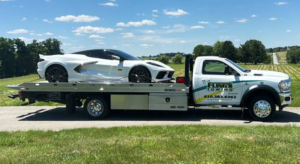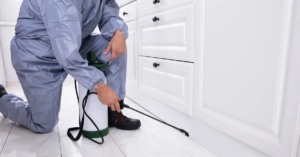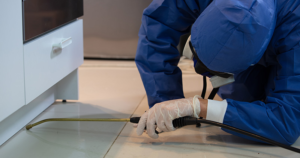Gutter Guard MT Pleasant prevents clogging and helps with drainage. They also protect the gutters from rust and wood rot. They can be installed professionally or DIY.
They are a great investment and can save you money in the long run. They also increase the value of your home. If your area is prone to bushfires, they can even help to prevent fires by acting as a barrier between dry debris and embers.

Ice dams are formed when melted snow refreezes at the roof’s edge, creating a thick, heavy ridge of ice that can block water from flowing off the roof and into the gutter. This can lead to clogged gutters, which can damage the structure of the roof and the interior of the home. Gutter guards can help prevent ice dams by preventing debris from blocking the flow of meltwater from the roof to the gutters. However, they are not a cure-all and should be used in conjunction with other preventive measures, including proper attic insulation and ventilation, and regular maintenance.
There are a number of different types of gutter guards, and each one has its own unique advantages and disadvantages. The type of gutter guard you choose will depend on your climate and home’s construction. Brush-style gutter guards, for example, are essentially oversized pipe cleaners that rest inside the gutter and prevent large debris from clogging the system. These are easy to install, but they may be less durable than other options. Foam gutter guards, on the other hand, are triangular blocks of foam that sit in the gutter and allow small debris to pass through while preventing larger waste from entering. These are also easy to install, but they may be susceptible to cracking and fading over time.
Heated gutter guards are another option that can help prevent ice dams by keeping the gutter warm enough to melt snow and ice. These systems can be expensive to install and operate, but they can save homeowners money in the long run by reducing the frequency of gutter cleaning and repair. Heated gutter guards are not a complete solution, however, and will still require regular maintenance to ensure that the system is working properly.
The key to selecting the best type of gutter guard is to understand your home’s needs and budget. A professional can conduct a consultation to assess the condition of your current gutters and recommend the right solution for your home. Contact CoMo Premium Exteriors to schedule a consultation. Our experts can provide valuable advice based on years of experience in the industry and assist you in choosing the perfect gutter guard for your home.
Prevents clogs
Gutter guards prevent clogs, which can cause water to overflow from your gutters and damage your walls, roof, and landscaping. They also extend the lifespan of your gutters by reducing the damage caused by stagnant water and trapped debris. They can even help deter pests like mosquitoes and birds.
There are several different types of gutter guards, and each one has its own benefits and drawbacks. The best choice for your home will depend on the weather conditions in your area and the type of trees nearby. Some guards are easier to install and maintain than others, but they all help keep your gutters free of debris.
Clogged gutters can lead to a number of problems for your home, including water damage, mold, and rotting wood. These problems can be costly to repair, but gutter guards prevent clogs and water overflow. They also reduce the risk of accidents, as climbing ladders to clean your gutters can be dangerous.
Gutters that are clogged with leaves, twigs, and other debris can overflow and cause drainage problems, resulting in water damage to your house. These clogs can also shorten the life of your gutter system by adding extra weight. Gutter guards prevent these clogs and extend the lifespan of your gutters.
The best gutter guards are made of heavy-duty materials that can withstand high winds and frequent rainfall. They also have a curved design that allows water to flow down through them without overflowing. Some options are also designed to work with specific gutter sizes and styles, making them a good choice for many homeowners. For example, the Amerimax gutter guard has a stepped design that directs rainwater down the gutter while blocking debris and seed pods from getting into your walls or under shingles. Its powder-coated aluminum construction prevents rust and comes with a lifetime warranty. Some guards are also available in a variety of colors to match your home’s style.
Prevents bushfires
Gutter guards can prevent fires by minimising the presence of flammable materials around the home, especially in bushfire-prone areas. Ember attack is a serious hazard in these areas, and clogged gutters can ignite when airborne embers ignite the leaf litter and debris inside. Gutter guards keep leaf litter and twigs away from the gutter, preventing them from igniting during bushfires and increasing the chance of a roof fire. In addition, ember proof gutter guards can help minimise the spread of fire to nearby homes and properties.
To protect your home from bushfires, choose a metal gutter guard that is designed to stop embers and flames. This type of guard fits over the gutter and has a fine mesh design that blocks debris from entering the gutter while still allowing water to flow through. The mesh is also woven instead of moulded, making it more durable and resistant to fire and embers. You should also look for a product that is powder-coated to improve its fire resistance.
Some types of gutter guards can become dislodged or come loose over time, so it’s important to regularly check and clean them. Additionally, you should also make sure that your home is well-prepared for bushfires by clearing debris, cutting back overhanging trees and shrubs, and creating a fire escape plan. Gutter guards can be a smart investment for bushfire-prone homes, and they can even improve resale value by enhancing the fire safety of your home.
While it’s impossible to predict a bushfire, you can prepare your home by installing metal gutter guards and taking other fireproofing measures. In addition to a home fire escape plan, you should also prepare a survival kit and practice safe evacuations from your property. Gutter guards can be a great way to protect your home from fire hazards, and they can reduce the maintenance and cleaning needed to maintain a healthy and functional gutter system. In addition, they can also help you save money by reducing your need for cleaning and repair services. However, you should always take precautions to stay safe during a bushfire and follow local fire warnings and evacuation instructions.
Prevents water damage
When gutters are clogged with leaves, they overflow and can cause water damage to the home. These problems can be very costly to repair. Gutter guards prevent these issues by keeping debris out of the gutters and allowing water to flow freely. They can also be used to reduce the risk of water damage to your roof and foundation.
Gutter guards can also improve your curb appeal and increase the value of your home. Many potential buyers pay attention to the condition of your gutters. When they are in good condition, they signify that the homeowner has taken care of the home and has been responsible with maintaining it.
However, despite the benefits of gutter guards, it is important to understand that they do not eliminate the need for maintenance. These systems need to be cleaned periodically, especially during heavy rains. Also, gutters can become damaged from falling branches or hail. Therefore, you should consider investing in fascia and soffit board repairs before installing gutter guards.
There are many different types of gutter guards on the market, each with its own pros and cons. The best type of gutter guard for your home depends on your needs, budget, and climate. For example, you should choose a gutter guard that is durable and can withstand harsh weather conditions. Also, make sure to consider the size of your home and roof when choosing a gutter guard.
One of the most common causes of water damage is overflowing gutters, which can lead to rotted wood and fascia and foundation damage. The good news is that gutter guards can help to prevent this problem and protect your home from costly repairs.
A gutter guard consists of a metal mesh that sits in the gutter and keeps out leaves, twigs, and other debris. It can be installed DIY or professionally. These systems are available in a variety of colors and sizes, so you can find the perfect fit for your home.
Another benefit of gutter guards is that they can help to prevent bushfires. This is because embers from bushfires can ignite dry materials in the gutter, such as leaves and twigs. By installing a metal gutter guard, you can prevent fires from spreading around your house. In addition, they can also protect your property from water damage and keep debris from causing ice dams.








